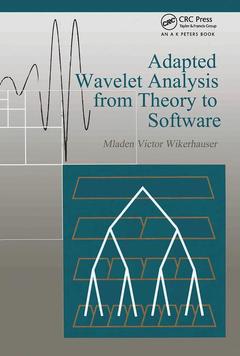Adapted Wavelet Analysis From Theory to Software
Auteur : Wickerhauser Mladen Victor

Mladen Victor Wickerhauser is professor of mathematics and statistics at Washington University, St. Louis. He holds a PhD from Yale University. Professor Wickerhauser’s research interests include harmonic analysis, wavelets, and numerical algorithms for data compression. He has six US patents and 118 publications, one of which led to an algorithm used by the FBI to encode fingerprint images.
Date de parution : 12-2019
15.2x22.9 cm
Disponible chez l'éditeur (délai d'approvisionnement : 14 jours).
Prix indicatif 71,13 €
Ajouter au panierThème d’Adapted Wavelet Analysis :
Mots-clés :
Wavelet Packet; Llo Ca Te; Wavelet Packet Coefficients; Wavelet Packet Bases; Quadrature Filter; Wavelet Subspaces; Output Array; Time Frequency Atoms; Local Cosine; Tensor Products; Low Pass High Pass; Riesz Basis; Basis Subset; Input Array; Schwartz Function; Dwt; Library Tree; 2L Points; Hedge Level; Scaling Subspace; Littlewood Paley Decomposition; INI; Binary Tree; Orthonormal Basis; Schwartz Class



